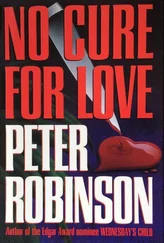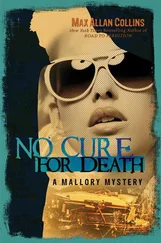Of course, this was not a moment of common sense or realism. I know it is the melodramatic emotions therapy evokes from apparently simple events that makes it so easy to dismiss. In life, some would slap Gene and tell him to grow up. Others would hug him and say, “Of course, your father loves you. He was just confused and scared. We all make mistakes …” and so on. Unfortunately, that isn’t the way children experience life. It isn’t really the way we feel inside, either, in the softest and most hidden part of ourselves. People often confuse not having visited that interior with its not existing.
It took another year, our third, before Gene was able to accept both what it had meant to him as a child and what it meant in the real world. He was, at last, able to see his father as a whole man, not as a pair of extreme choices. And he was also able to see that a quarrel between his parents wasn’t somehow a by-product of his scarlet fever.
The last gain was useful. His parents split up during the third year of his therapy. It turned out that Don had been having an affair with one of the women painters in the Garage group for years. He broke it off and simultaneously left his wife. After several successful shows Don felt confident his career was launched successfully and he abruptly became unwilling to stay in a fractured marriage or continue a fractured love affair. Clearly, he was so driven by the outside world’s view of him that once Don was an acknowledged success he felt entitled to seek romantic happiness as well.
Gene understood the divorce’s cause and effect better than his parents. In fact, he had experienced their problems, covering up for them, years before they confronted them. (Actually, they never did confront the truth of their lives. Carol told herself the marriage was happy until Don became “swell-headed.” Don told himself that Carol had convinced him he was a worthless and unlovable man; thanks to his success he discovered that he was fine, and concluded she was the sick one.) It was this aspect of Gene’s neurosis, his willingness to be the fall guy for his parents’ conflicts, that I came to like. I never liked the Gene who pulled with his mother against his father’s ambitions, the Gene who vomited his rage on his father’s art. He was too much like the young Rafe I still did not approve of. But this Gene, the child who understood his parents’ need to pretend that their long dead marriage was still alive, that Gene I could feel sorry for. And I was proud of how patient and mature he was in dealing with the grandiose Don and his grief-stricken mother after the separation.
I have only covered a section of Gene’s analysis and his life. Therapy’s most encouraging and beautiful by-product, the flowering of personality once the bonds of illness are loosened, was quite vigorous and impressive when it came to Gene. The boy who had never shown a dedicated interest in anything — intensity for work and ambition being a betrayal of his mother and a frightening impersonation of the father who hurt him — quickly found an interest in electrical engineering and computers, then at the beginnings of the microchip revolution. Both mother and father were baffled by his scientific and mechanical interests. Carol was literary and Don visual. They were ignorant and hostile to technology’s pragmatism.
Gene, by sixteen, worked hard in school for the first time. I suggested he try for a summer program at Johns Hopkins offered to bright high school students. (I had him tested and found out he had extraordinary math aptitude, something that had been hidden by his attendance at a progressive non-testing school.) He qualified easily. There he discovered his love of computers and his knack for understanding not only their abstract logic but their mechanism as well. One Room, to their credit, allowed him to concentrate on this new interest. Our therapy ended when Gene graduated high school, got into his first choice, MIT, and left for Boston. There he hoped to learn how to build the machines that were already revolutionizing our world. The therapy was ready to terminate anyway. Gene had developed, emerging as a distinct and clear image from his parents’ darkroom.
I asked him, just before he left for college, what he liked about computers.
“They do what you tell them.”
“Not when I’m doing the telling,” I said. I still can’t fathom them.
Gene laughed. After a moment, he said, “And they don’t tell lies …”
I closed the book on Gene. As I saw it then, not wrongly, only too correctly I’m afraid, Gene’s mature fascination with the building of computers was an homage to the happy hours he spent with the hammers and saws of his childhood. He had returned to their pleasures, standing on adult legs as a builder, at last becoming the illusion he had loved, the carpenter-father who used his hands to make things. Only this carpenter was going to build machines that wouldn’t tell lies. He had lived for so many years with only a vision of hell. Now he had a vision of heaven.
CHAPTER FOUR
The Widening Gyre
I CONSIDERED THE THERAPY A SUCCESS AND, TO BE HONEST, RARELY thought of Gene. What lingered was its personal meaning, in particular the trigger Gene provided for my love affair with Julie. Unfortunately, my happiness with Julie did not last.
I couldn’t persuade her to marry me. For a long time, much longer than was fair to me, she pretended her career was the reason. After she drifted from off-Broadway theater into producing low-budget films, she announced she needed to relocate in L.A. to break into the mainstream movie business. When I offered to follow her out there, she confessed her true worry — that we had no future because of the potential for genetic trouble should we have children. That explained why she had always insisted on keeping our love affair a secret from the Rabinowitz family. I believed, and this fueled a bitter final quarrel, Julie’s concern about having children masked a keener fear: that she couldn’t bear the prospect of lifelong disapproval from her mother for making an unseemly marriage. Julie was outraged that I accused her of caring what her mother would think, but I’m sure readers can guess how convincing she sounded to a psychiatrist.
I was unwilling to continue the relationship as a haphazard liaison at a geographical remove — and a clandestine one to boot. Nor was she, really. A mere six months after taking a job in Los Angeles in 1984, she married a heart surgeon (significantly, I thought) and had two children within four years. In fact, her new baby’s birth announcement, my second cousin Margaret, was in my briefcase the night I returned to the Ritz-Carlton Hotel in Boston and was given a message that Gene Kenny had phoned, leaving a number to reach him at the Sheraton in Cambridge. It was 1988, nine years since our last session.
I didn’t return the call right away. I was tired. I had just completed my fourth day of testimony in the Grayson Day Care case, a widely reported and scandalous trial of the systematic sexual abuse of five children in Boston by a married couple running a small baby-sitting service out of their home. Two days of direct and two more of cross-examination were followed by a round of television interviews, climaxing with the oddness of appearing on Nightline. I felt debilitated. (It’s strange to be interviewed by someone whose face you can’t see. You sit in a room with a cameraman and a sound engineer, reacting to a voice in your ear, and yet you have to manage your face, because the audience has the illusion that you can see Ted Koppel. You can’t. Koppel has a monitor, not his interviewees. I’m told Henry Kissinger gets one, but I’m not sure I believe it. This gives Koppel a considerable psychological edge — he can communicate with the audience through facial expressions without his subject knowing. Koppel sounded annoyed when I informed the audience that I couldn’t see him. I’ve been on since then so I know he doesn’t bear a grudge for my repeated attempts to undermine this broadcasting trick, but I still don’t get a monitor.)
Читать дальше












